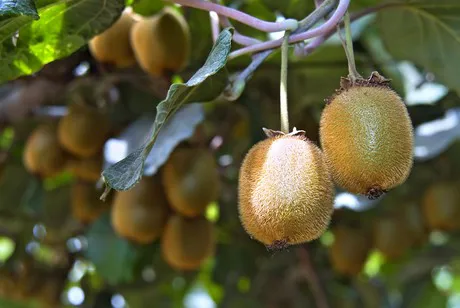California is just wrapping up a good-sized crop of kiwis.
“California started with kiwis on October 1st and it’s been a good season. Production was up and shipments followed,” says John Fagundes of Cal Harvest Marketing Inc. in Hanford, Ca. “They had a good season but there were also some plantings starting to mature.”
Running the same time as California, only slightly longer, was the import season for kiwis from Italy. “They were fairly consistent this season. I guess they had a fairly large crop so Italy is still going. They tend to go a little longer than California,” says Fagundes.
This marks the turnover to fruit from Chile as well as New Zealand. “Chile and New Zealand are just getting started with their production. The Chileans are doing a lot better job with their quality of fruit and not trying to pick immature fruit. And I hear there’s a bumper crop of Gold kiwis coming out of New Zealand so I’d expect to see a lot of Golds coming into the U.S.”
Demand pushing up
Matching this good supply of fruit is increasing demand for kiwi. “The U.S. is the last stronghold of consumption, mainly because we have so many choices in the United States for the fruits and vegetables,” says Fagundes. “It’s more available in our supermarkets now and the supermarkets are getting good turnover as well with their purchases.”
Though with plenty of fruit available, prices have been slightly down this season, though increasing as the domestic supply ends. “California had a larger crop and we had a little extra carryover out of New Zealand so we started a bit later. So prices were fairly steady all the way until week four of this year and then prices started to increase as supplies started to become limited,” adds Fagundes.
For more information:
John Fagundes
Cal Harvest Marketing Inc.
Tel: +1 (559) 582-4000
john@calharvest.com
http://www.calharvest.com/
